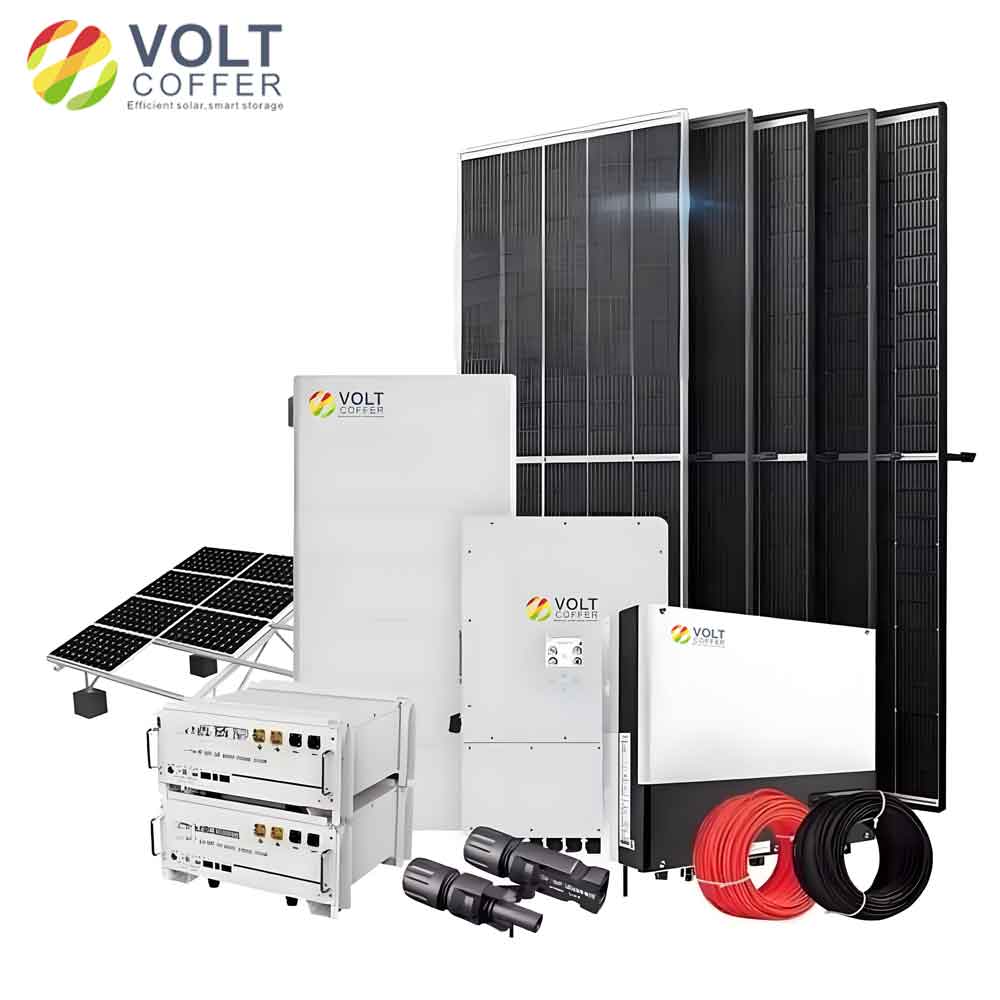When it comes to choosing solar panel kits for your home or business, understanding the differences between monocrystalline and polycrystalline solar panel kits is crucial. Each type has its own set of advantages and disadvantages, making them suitable for different applications and environments. This article will compare monocrystalline and polycrystalline solar panel kits in detail, helping you make an informed decision based on your specific needs.

Understanding the Basics
Monocrystalline Solar Panel Kits
Monocrystalline solar panel kits are made from single-crystal silicon. The manufacturing process involves cutting silicon wafers from a single cylindrical crystal, which gives these panels a uniform appearance and high efficiency.
| Feature | Description |
|---|---|
| Silicon Purity | High (single-crystal silicon) |
| Appearance | Uniform dark color |
| Efficiency | Higher than polycrystalline |
| Space Efficiency | More efficient use of space |
Polycrystalline Solar Panel Kits
Polycrystalline solar panel kits are made from multiple silicon crystals. The silicon is melted and poured into a mold, then cut into wafers. This process is simpler and less expensive than the monocrystalline manufacturing process, resulting in a different appearance and efficiency level.
| Feature | Description |
|---|---|
| Silicon Purity | Lower (multiple silicon crystals) |
| Appearance | Bluish hue with a speckled look |
| Efficiency | Lower than monocrystalline |
| Space Efficiency | Less efficient use of space |
Efficiency and Performance
Efficiency
Monocrystalline solar panel kits generally have higher efficiency rates compared to polycrystalline solar panel kits. This means that monocrystalline panels can convert a greater percentage of sunlight into electricity.
| Type of Solar Panel Kit | Efficiency Range (%) |
|---|---|
| Monocrystalline | 15% – 22% |
| Polycrystalline | 13% – 18% |
Temperature Coefficient
The temperature coefficient indicates how well the solar panel performs at high temperatures. Monocrystalline solar panel kits typically have a lower temperature coefficient, meaning they perform better in high-temperature environments.
| Type of Solar Panel Kit | Temperature Coefficient (%/°C) |
|---|---|
| Monocrystalline | -0.3% to -0.4% |
| Polycrystalline | -0.4% to -0.5% |
Cost and Manufacturing
Cost
Polycrystalline solar panel kits are generally less expensive to produce than monocrystalline kits due to the simpler manufacturing process. This cost difference is reflected in the retail prices of the panels.
| Type of Solar Panel Kit | Cost per Watt (USD) |
|---|---|
| Monocrystalline | $1.00 – $1.50 |
| Polycrystalline | $0.90 – $1.20 |
Manufacturing Process
- Monocrystalline Solar Panel Kits: Made from single-crystal silicon, requiring a more complex and costly process to produce the uniform silicon wafers.
- Polycrystalline Solar Panel Kits: Made from silicon crystals melted together, resulting in a simpler and cheaper manufacturing process.
Space Efficiency
Because monocrystalline solar panel kits are more efficient, they require less space to produce the same amount of energy as polycrystalline panels. This makes them ideal for installations with limited space, such as residential rooftops.
| Type of Solar Panel Kit | Space Required (sq. ft. per kW) |
|---|---|
| Monocrystalline | 80 – 100 |
| Polycrystalline | 100 – 120 |
Lifespan and Durability
Both monocrystalline and polycrystalline solar panel kits have similar lifespans, typically ranging from 25 to 30 years. The durability of the panels is also comparable, with both types being designed to withstand various weather conditions, including hail, wind, and snow.
| Type of Solar Panel Kit | Expected Lifespan (years) |
|---|---|
| Monocrystalline | 25 – 30 |
| Polycrystalline | 25 – 30 |
Aesthetics
Aesthetics can be a consideration for some homeowners, particularly those with visible roof installations. Monocrystalline solar panel kits have a sleek, uniform appearance, often preferred for residential installations. Polycrystalline panels have a bluish hue and a less uniform look, which some may find less attractive.
| Type of Solar Panel Kit | Appearance |
|---|---|
| Monocrystalline | Uniform dark color |
| Polycrystalline | Bluish, speckled look |
Environmental Impact
The environmental impact of manufacturing solar panels is an important consideration. The production of monocrystalline panels requires more energy and produces more waste silicon, making them less environmentally friendly compared to polycrystalline panels.
| Type of Solar Panel Kit | Environmental Impact |
|---|---|
| Monocrystalline | Higher energy consumption, more waste silicon |
| Polycrystalline | Lower energy consumption, less waste silicon |
Suitability for Different Applications
Residential Installations
For residential installations, the choice between monocrystalline and polycrystalline solar panel kits often depends on space availability and aesthetic preferences. Monocrystalline panels are favored for their higher efficiency and sleeker appearance, especially in limited space areas.
Commercial Installations
In commercial installations, where space might be more abundant and cost considerations are paramount, polycrystalline solar panel kits can be a more cost-effective solution. However, if space efficiency is crucial, monocrystalline panels might still be the better choice.
Conclusion
Choosing between monocrystalline and polycrystalline solar panel kits depends on various factors, including efficiency, cost, space availability, and aesthetic preferences. Monocrystalline solar panel kits offer higher efficiency and a more uniform appearance, making them ideal for installations with limited space and for homeowners who prioritize aesthetics. On the other hand, polycrystalline solar panel kits provide a more cost-effective solution with a slightly lower efficiency, making them suitable for larger installations where space is not a constraint.
Understanding the differences between these two types of solar panel kits can help you make an informed decision that best meets your energy needs and budget. Whether you choose monocrystalline or polycrystalline, both options offer the benefits of renewable energy, reduced electricity bills, and a positive environmental impact.
